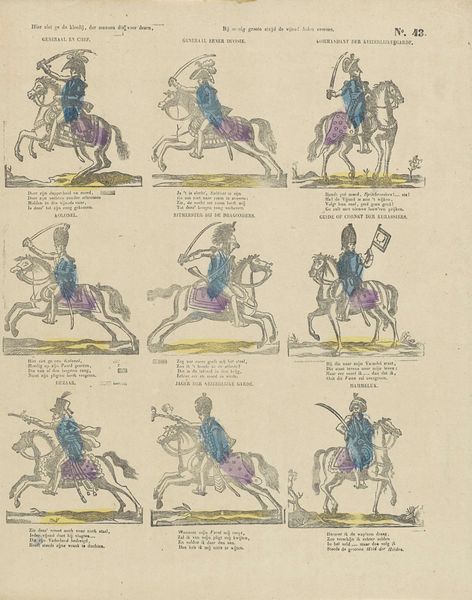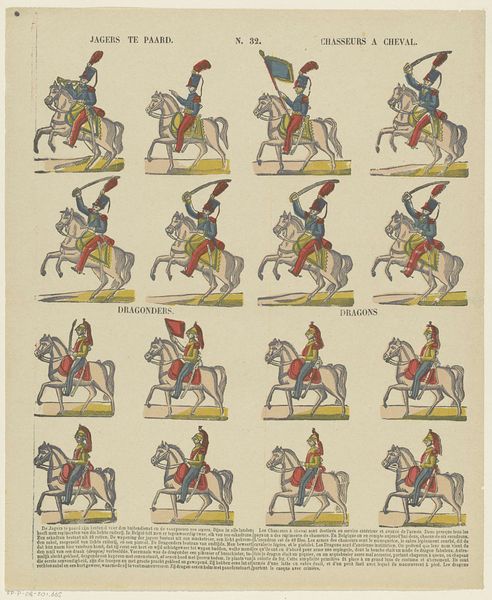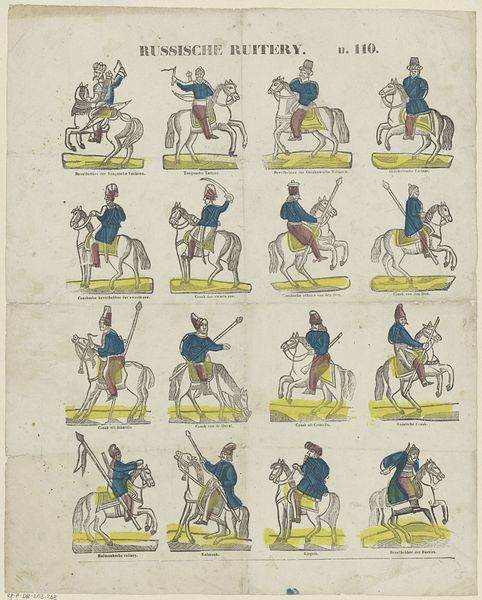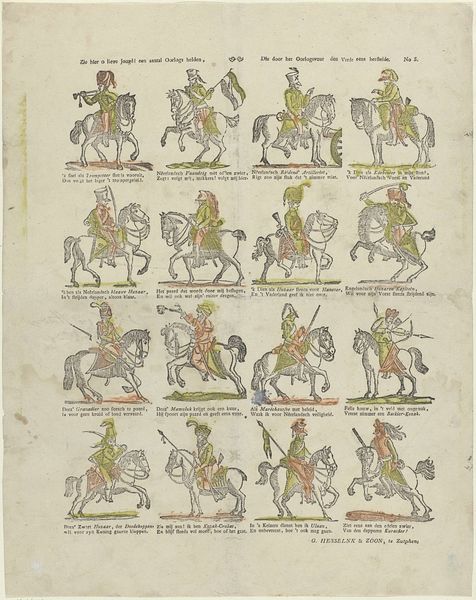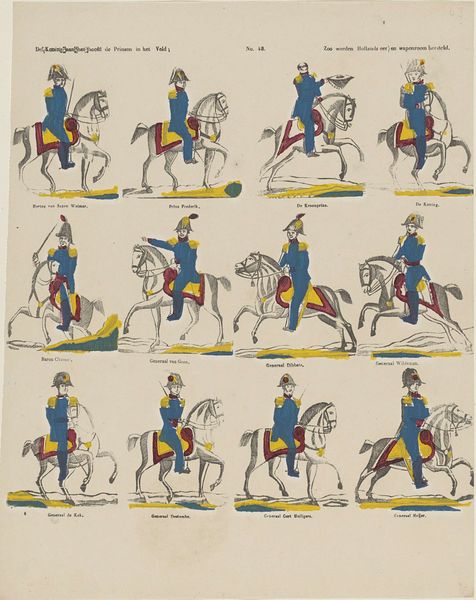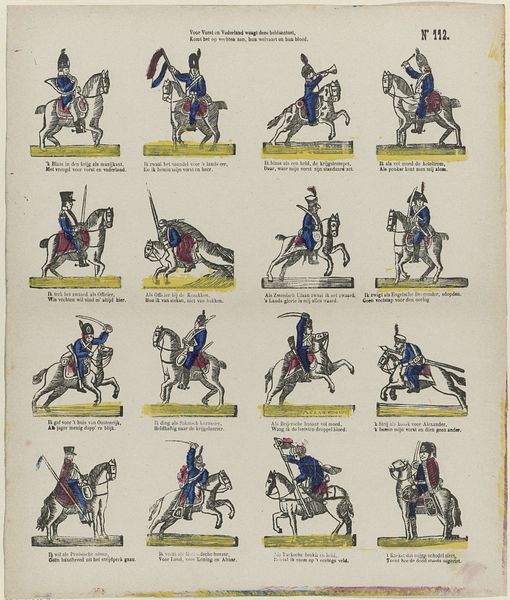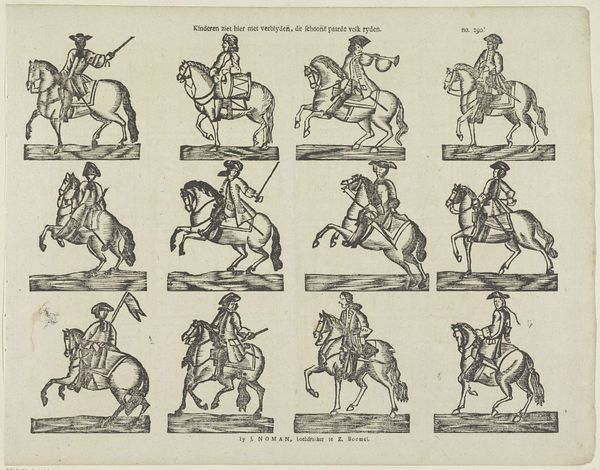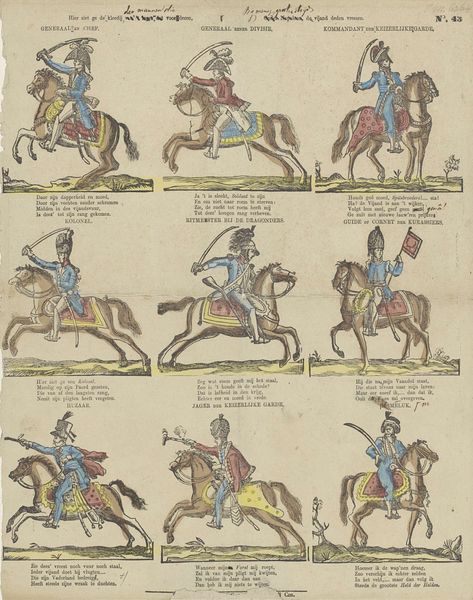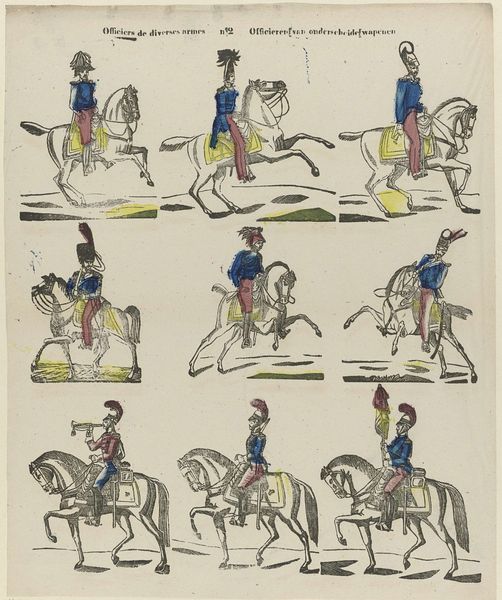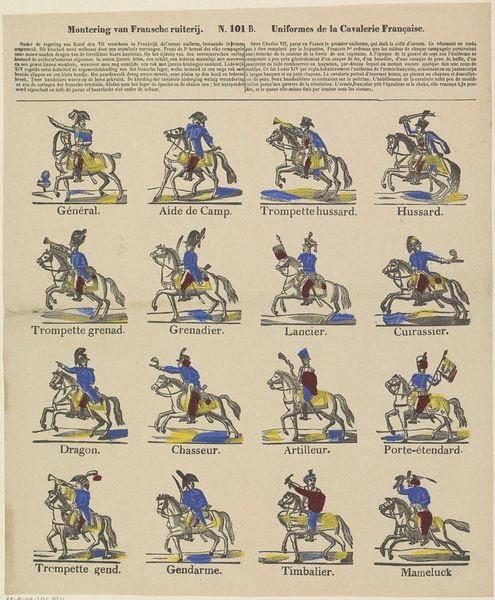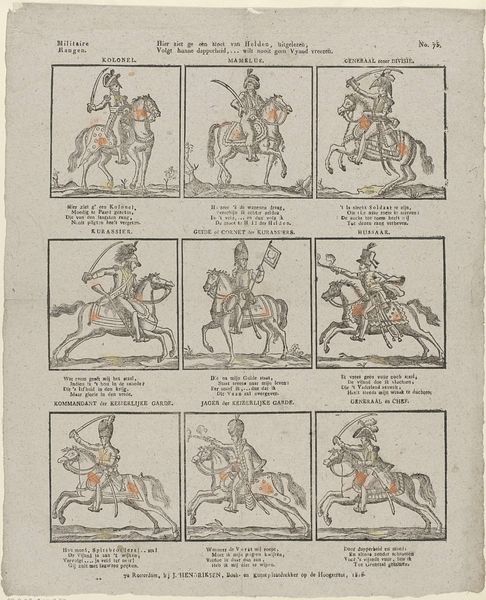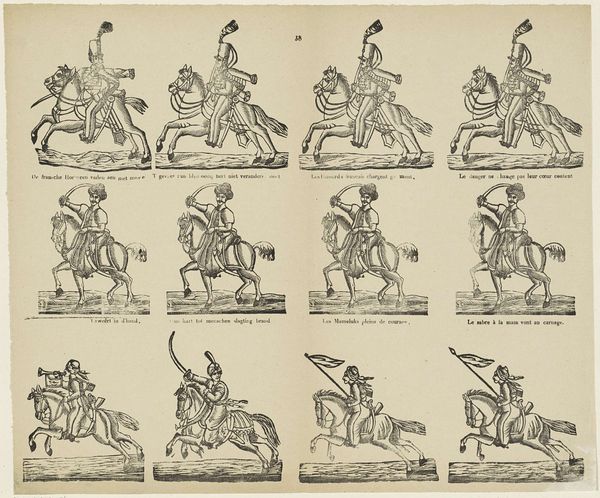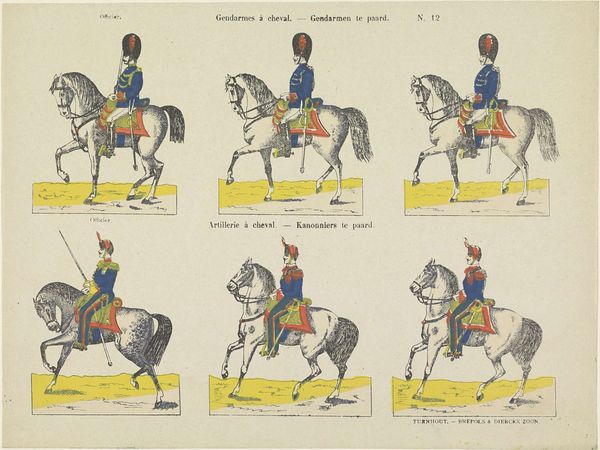
Hier ziet ge de kleedij, der mannen die voor dezen, bij menig groote strijd de vijand deden vreezen 1827 - 1894
0:00
0:00
mhemeleersvanhouter
Rijksmuseum
Dimensions: height 395 mm, width 315 mm
Copyright: Rijks Museum: Open Domain
Curator: Well, this print, titled "Hier ziet ge de kleedij, der mannen die voor dezen, bij menig groote strijd de vijand deden vreezen," dating sometime between 1827 and 1894, and credited to M. Hemeleers-van Houter, showcases a collection of military figures. It's a fairly straightforward historical document rendered through engraving. My initial sense is that the use of blue, red, and yellow give a rather naive quality despite its apparent historical ambition. Editor: It certainly has an appealing graphic clarity. I see each uniformed figure on horseback repeated, almost like toy soldiers lined up. Is there a cultural resonance to the depiction of these figures; is there a shared language embedded in them? Curator: These are depictions of high-ranking military men: Generals, Colonels, each figure represents a different rank and probably a different regiment, judged from the variation in their attire. We're looking at more than simple military portraiture, and can think of it more as visual rhetoric meant to remind its viewers of its historic battles, to glorify it even. The engravings, especially if this image circulated widely, shaped public imagination regarding past glory and helped foster sentiments of patriotism. Editor: It strikes me, though, that while these figures brandish swords and adopt heroic poses, the medium—engraving—and the style, described as Romanticism, lend a certain idealized softness. Perhaps the combination served to distance viewers from the grim realities of battle, instead encouraging a heroic interpretation of sacrifice. Curator: Absolutely. These aren't meant to show the ugly truths of war. We are witnessing here an attempt to cultivate a visual language that builds the romantic narrative. Even something as simple as color serves this. Notice how red isn't just a visual descriptor, but implies heroism and power through visual coding. It would resonate with the viewer because color carried cultural information in this specific context. Editor: And looking at this piece again with fresh eyes, I consider how art is not simply reflective; pieces such as this participated in shaping ideologies about history, memory, and a society’s perception of heroism, specifically for Dutch national identity at that moment in time. Curator: Exactly! It underscores how visuals act as a potent reminder—sometimes prompting a romantic, constructed recall of the past for building present sentiments, not always providing facts as they happened. Editor: In essence, even ostensibly 'documentary' artwork functions as powerful, actively formative tools within any given historical moment. It gives a far deeper and layered significance to pieces that, initially, we may casually categorize as belonging simply to history. Curator: Well said. Indeed. It also adds a touch of poignant recognition when standing here reflecting on this artist and her art that reminds us, perhaps, that history is never simply factual recall, it is active ongoing creation.
Comments
No comments
Be the first to comment and join the conversation on the ultimate creative platform.
